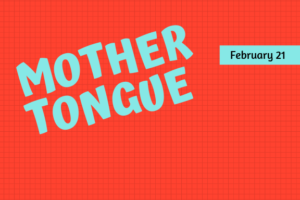
“Talk to the person in their language, and it goes to their heart.”
-Nelson Mandela
Today, February 21, is being observed to promote linguistic and cultural diversity. On 17th November 1999, UNESCO designated this day as International Mother Language Day.
Language is a system of communication through sounds, words, body gestures, symbols etc. Feelings, thoughts, emotions are shared through the medium of language. There are about 6000 languages spoken worldwide. It is an indispensable part of any nations’ culture as well as identity.
Mother tongue is the language that a person learns and speaks as a child at home. It helps in forming emotions, thinking and developing cultural and personal identities. Research suggests that mother tongue education is an essential step in language learning for children. Studies have shown that students, who have initially started their learning in their native language, seem to have a better ability to learn other languages and develop excellent language skills later in life.
Remember Kashmir is a multilingual country wherein different languages are spoken. Kashmiri is the most widely spoken followed by Pahari. The other languages include Dogri, Punjabi, Gojri, Ladakhi, Urdu, Pushtu and Hindi. Surprisingly, Urdu is the official language in the valley.
The Kashmiri language belongs to the sub-group of the Indo-European languages, namely Dardic languages, which is itself a sub-group of Indo-Aryan languages. It is written in Devanagari and Perso-Arabic scripts. It contains Sanskrit, Persian, Punjabi and Dardic words and elements.
Also Read: BILINGUAL CHILDREN WHO SPEAK THE NATIVE LANGUAGE AT HOME HAVE HIGHER INTELLIGENCE: STUDY
The Sufis’ like Lalla Ded, Sheikh-Ul-Alam, Habba Khatoon, Arnimaal, Rupa Bhawani, Mahmood Gami, Parmanand etc. have played a significant role in the development of Kashmiri language. Particularly the Vakhs and Vatchuns of Lalla Ded and Sheikh-Ul-Alam are an integral part of daily conversations. According to George Abraham Grierson, “Kashmiri is the only one of the Dardic languages that has literature.”
As per the United Nations, at least 43 per cent of the estimated languages spoken in the world are endangered, and one language loses its origin after every two weeks.
Though the state government made the Kashmiri language a compulsory subject since November 2008, unfortunately, no recruitment was done for teaching the subject. In most of the primary, middle and secondary schools, the subject of Kashmiri is being taught by teachers having little knowledge or degree required for the field. Globally 40% of the population does not have access to education in a language that they understand, and Kashmir is in no exception.
In every part of the state, the medium of teaching should be in native tongues: e.g. for Kashmiris, the medium should be Kashmiri, for Paharis, Pahari, for Dogras, Dogri etc. Otherwise, not only our children’s ability to learn other languages will die, our native tongues will meet the same fate as did the 43 per cent mentioned in the UN report.

